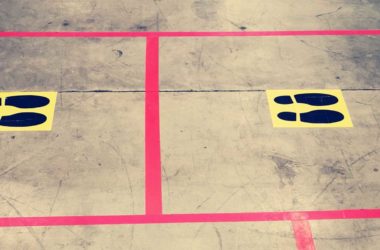The ear is a sensitive organ and can be damaged if exposed to excessive levels of noise. The measure of noise is referred to as sound pressure level (SPL) and is quoted in the unit decibel (dB).
Not all noise is the same and it is important to consider the type of noise an employee is exposed to before deciding on the most suitable PPE.
There are two properties of noise that are important to consider before deciding on PPE:
- The frequency of the noise
- The intensity of the noise at that frequency (or frequencies)
Frequency is the attribute of noise that determines its pitch. A high-pitch noise, such as that of a squeaking bearing contains high-frequency sound energy. A low-pitch noise, such as the hum of an electrical generator contains low-frequency sound energy. Frequency is an important consideration because the ear has different sensitivity at different frequencies.
The ear is most sensitive at frequencies from about 400-6,000Hz. These frequencies are important for speech intelligibility, and damage to the ear in this range can have a significant impact on the individual suffering hearing loss. The increased sensitivity of the ear at these frequencies is modelled mathematically by a frequency curve known as the A Weighting Curve.
When a SPL is quoted, it may be quoted using the A weighted value (dBA). This shows the value has been adjusted to represent its relevance to the sensitivity of the ear.
In summary, at very low and very high frequencies, the ear is less sensitive, while at frequencies in the middle of the audible range, the ear is much more sensitive. As a result, hearing protection must be designed and selected to ensure this is taken into consideration.
Selecting hearing protection that conforms to the standard EN 352 will ensure protection of the ear. The aim of any protection product is to reduce the SPL at the ear to a level that is not going to cause damage. The specific level of reduction required varies by region, but generally a SPL above 80(dBA) for anything other than a very short period of time will cause damage to ear.
When selecting hearing protection, there are several criteria that the manufacturer of the product is required to quote in the instructions to the user. These criteria help in the selection of the hearing protection:
- Assumed Protection Level (APL) gives the value of protection at a specific frequency. The frequencies the APL is quoted at most often start at a low frequency. The frequency is then doubled for the next APL value. This is known as an octave band increase.
- Single Number Rating (SNR) value represents the overall performance of the product and is based on the A weighted performance of the product. It offers less detailed information than the APL values, but it is useful for refining a search of hearing protection.
- High, Mid, Low (H,M,L) values give the performance of the hearing protection. H,M and L values offer a middle ground between the SNR and APL, offering a relatively detailed description of the performance of the product.
There are various types of hearing protection. Most common are the ear muff and ear bud types. Ear muffs sit over the ear and rely on a seal between the side of the head and the cushioning of the muff to provide protection. Ear buds or plugs have to be inserted into the opening of the outer ear and seal against the skin of the ear.

Avit
Ear plugs, tapered pack of 10 pieces

Peltor
Helmet mounted hearing protection













